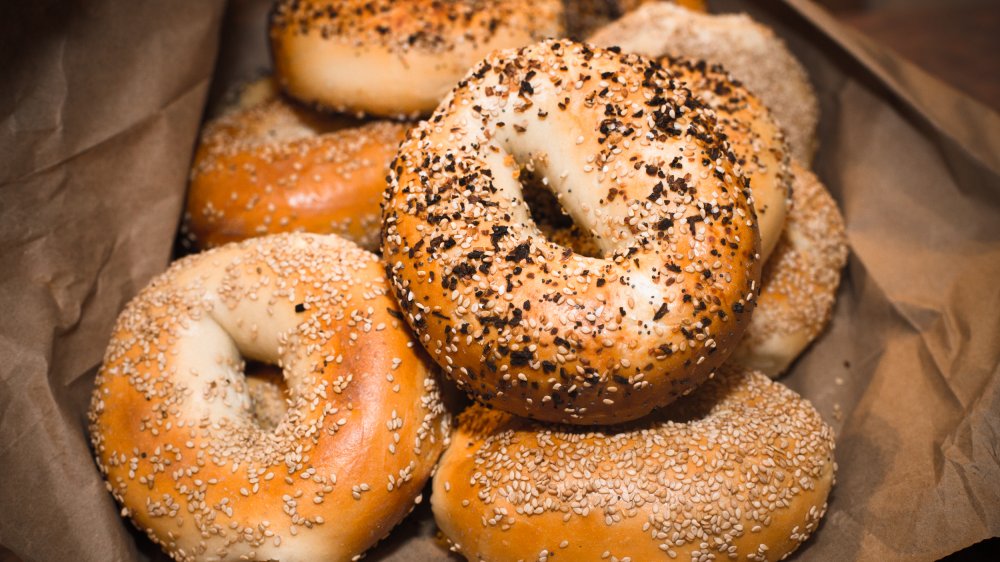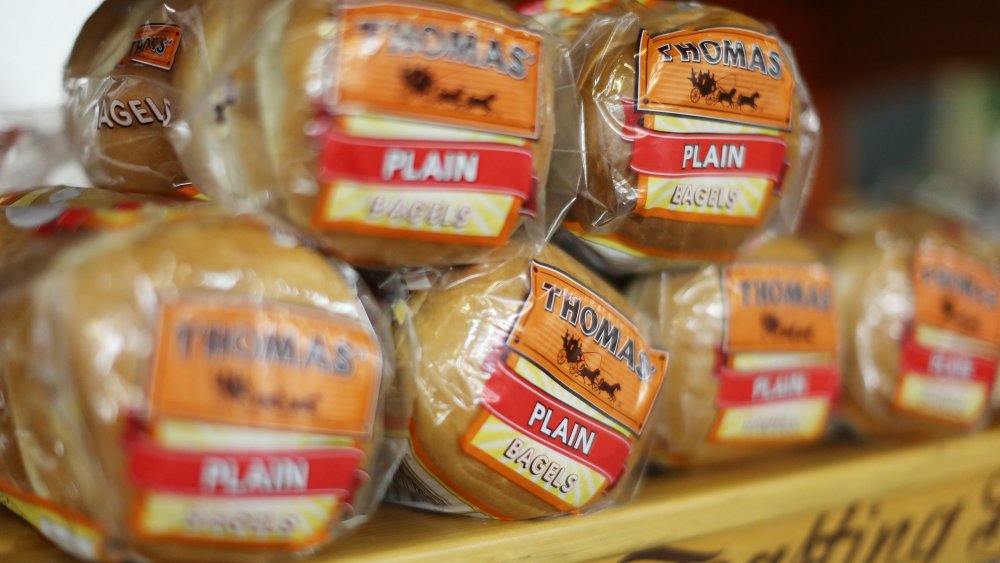The Real Reason Bagels Are Boiled Before They're Baked
Bagels are basic, and that's probably why people love them so much. According to The New York Times, all you need to make them are high-gluten flour, water, yeast, and malt syrup. (Sesame seeds, cheese, raisins, and all the rest are popular but optional.) The additional protein in the high-gluten flour makes the bagel elastic and chewy, and not dense and disgusting, explains New Yorker Bagels. The malt syrup is for sweetness, and it gives the authentic bagel its signature flavor (via Fine Cooking).
Some bagel aficionados will say you can substitute honey or maple syrup, while others would say there is no substitute for malt (via Slate). What might be the biggest part of the bagel-eating experience is a feel more than a taste — biting through that chewy, slightly crunchy crust. This bagel-defining moment requires one all-important step before those round deli delicacies hit the oven: They need to be boiled (via The Kitchn).
Won't a boiling bagel get water-logged? For one thing, bagels aren't like pasta or rice. They float. As The Kitchn explains, bagels are boiled for 30 to 60 seconds on each side, and the heat causes the starch in the flour to gelatinize so that water doesn't penetrate deep into the dough.
If you don't boil, do you get to call it a bagel?
The length of the boil can be varied. The more time the bagel spends in the pot, the thicker and chewier the crust. But what about skipping the boil altogether? In that case, the end result, according to purists, would not be a bagel but rather a "roll with a hole" (via Slate).
Since first introduced in New York City in the 1890s, the bagel has grown in popularity (via The Post & Courier). By the 1990s, the bagel was outselling the doughnut (via The Atlantic). Reaching such a wide consumer base, of course, required mass production and efficiency. And one way bagel factories achieved efficiency was to skip the boiling step. Instead, steam is injected into the ovens during baking, to at least emulate a true bagel crust (via NPR). The end result is softer and puffier, it and may not meet some people's definition of "bagel."
The boiled bagel's crust will be harder if the local water has more mineral content. New York City's water is especially soft, which is said to help a little with the texture of their famous bagels. Bagels in cities not blessed with such naturally soft water have been described as "tooth-rattling." Maybe there's something to be said for those soft factory bagels, after all.

